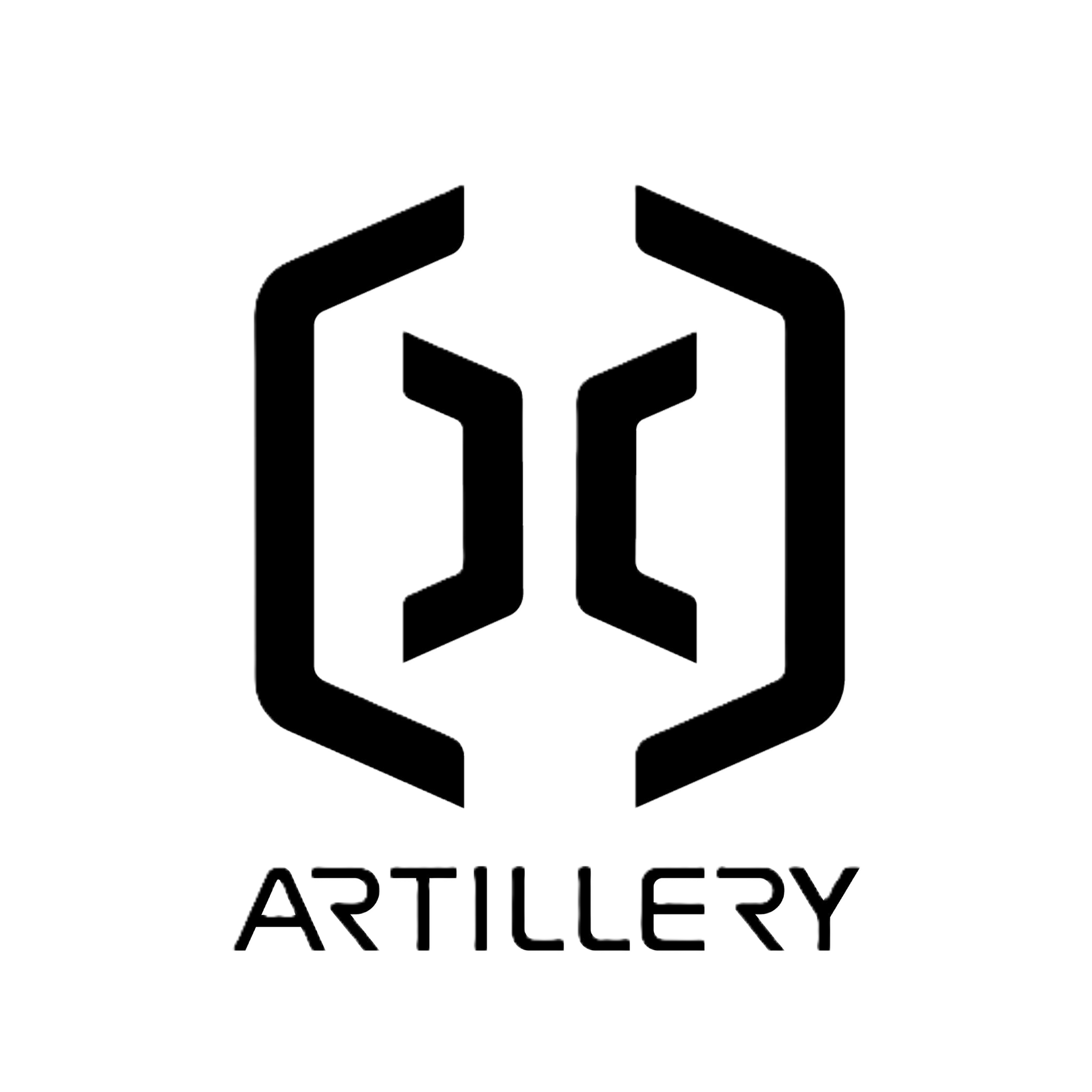Highlights
Very good print quality with large-format capabilities
Strong high-speed performance on newer models (Klipper integrated)
Direct drive extruders standard across most of the lineup
Open filament compatibility without proprietary restrictions
Generous build volumes (up to 300x300x400mm standard)
User-friendly setup with quiet operation and touchscreens
Affordable pricing for semi-premium features
Active modding community and upgrade-friendly designs
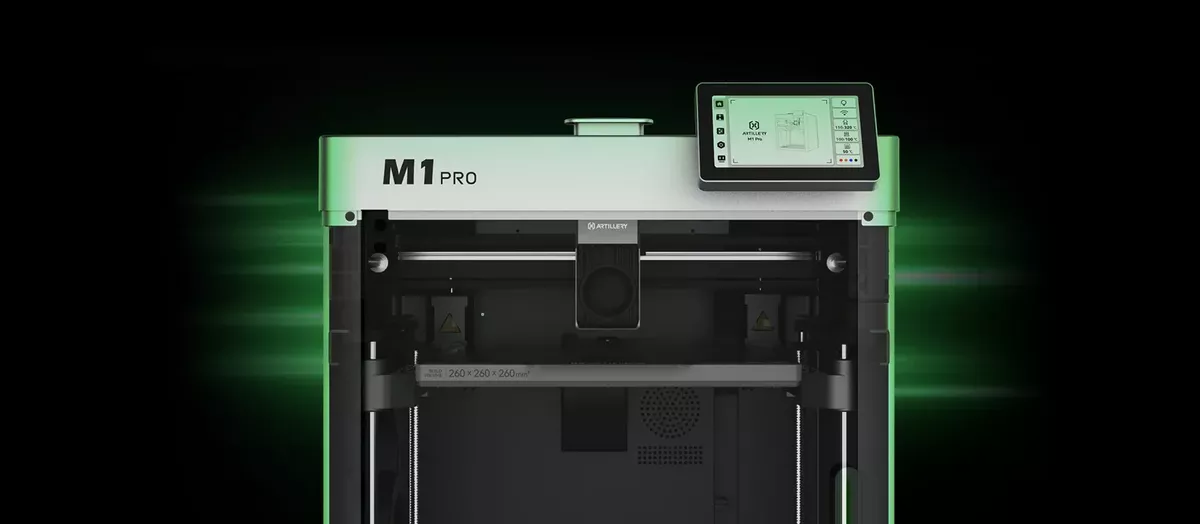
Artillery, founded in 2018, is a relatively young player in the 3D printing world but quickly made a name for itself by offering affordable printers with premium features typically reserved for higher-end models. Known primarily for models like the Sidewinder and Genius series, Artillery focuses on creating machines that are quiet, easy to use, and capable of producing high-quality prints right out of the box. The brand aims to strike a balance between affordability and a semi-premium experience, appealing to both hobbyists and semi-professional users. Artillery’s sleek designs, emphasis on direct drive extruders (where the filament feeding mechanism is mounted directly on the print head for better control, especially with flexible filaments), and silent stepper motor drivers (which reduce printer noise by using more refined motor signals) have helped it establish a loyal following, although occasional quality control issues have been noted.
Product Selection
4.0 /5
Artillery stands out for its sleek design, quiet operation, and large-format printing — all at budget-friendly prices. It’s a strong choice for users who want ease and print quality without complex setup.
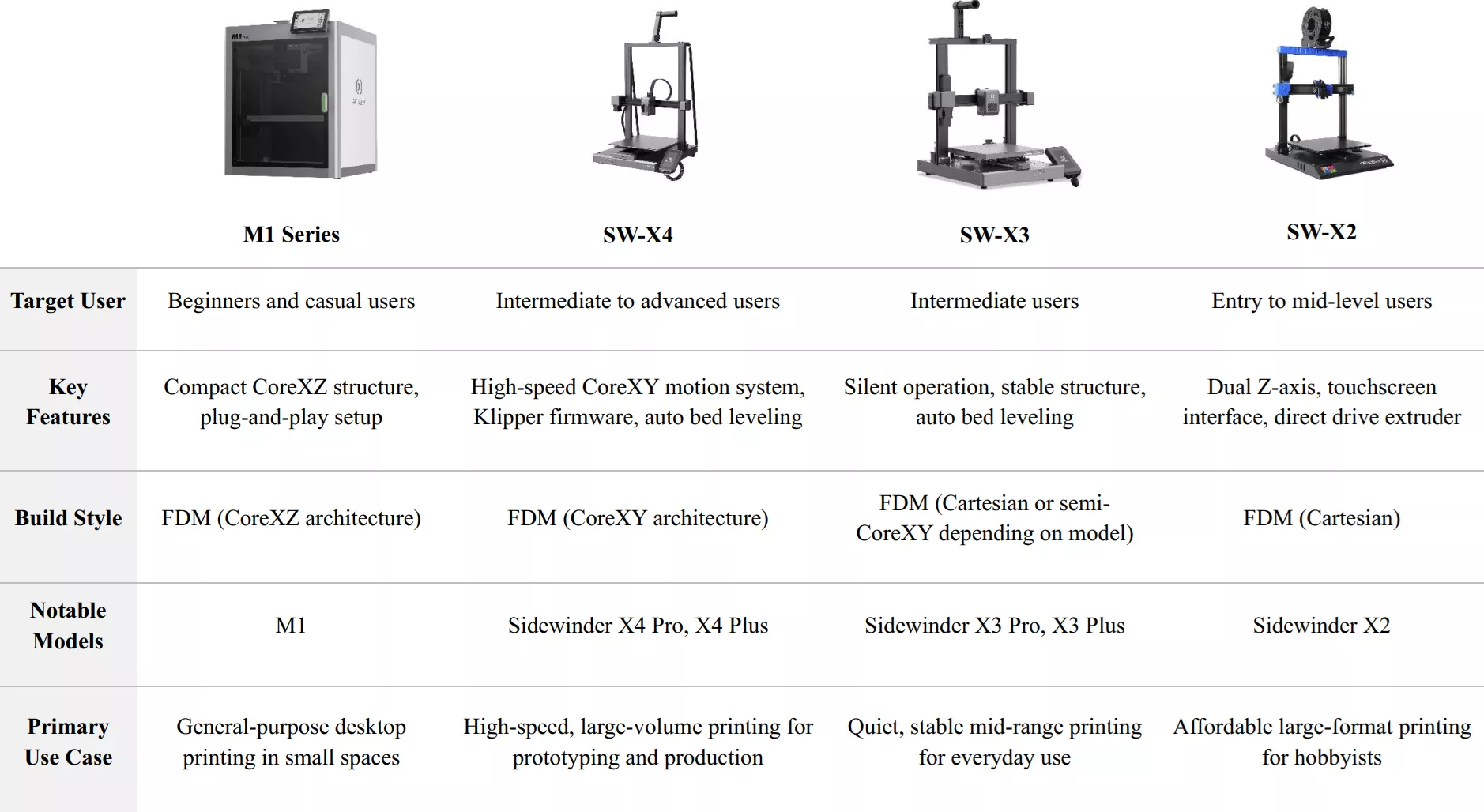
Ease of Use
4.0 /5
Ease of use is one of Artillery’s core focuses. Printers typically come mostly pre-assembled, reducing setup time considerably. Features like touchscreen interfaces (for easier printer control), quiet operation through silent stepper drivers, direct drive extruders, and automatic bed leveling (a system that detects and compensates for uneven areas on the print bed) on newer models make the user experience straightforward, even for those newer to the hobby. Firmware interfaces are simple, although some advanced tuning—especially with Klipper-powered X4 models—can require a bit more technical understanding. Overall, most Artillery machines aim to provide a near plug-and-play experience with room for user-driven customization.
Cost & Affordability
4.4 /5
Affordability is a major selling point for Artillery. The Sidewinder and Genius series typically fall in the $300–$600 range, offering larger build volumes and premium features at budget-friendly prices. High-speed models like the X4 Pro and X4 Plus push toward the $600–$800 range but still offer excellent value compared to similarly equipped competitors. Users looking for a large-format machine without breaking the bank often find Artillery’s offerings hard to beat.
Print Quality & Speed
3.9 /5
Artillery printers generally offer very good print quality, especially for their price point. Models like the Sidewinder X2 and Genius Pro deliver smooth layer lines (the visible "rings" on printed parts), accurate dimensions, and reliable adhesion to the print bed. The Sidewinder X4 series pushes into higher-speed territory, offering speeds up to 300 mm/s with Klipper firmware integration (Klipper is an advanced firmware that offloads processing from the printer to a connected computer or board, enabling faster and more precise control). However, as with many brands, maximum advertised speeds can sometimes come at the cost of slight reductions in print surface finish, especially on intricate models. Overall, Artillery balances speed and quality well for typical hobbyist and semi-professional needs.
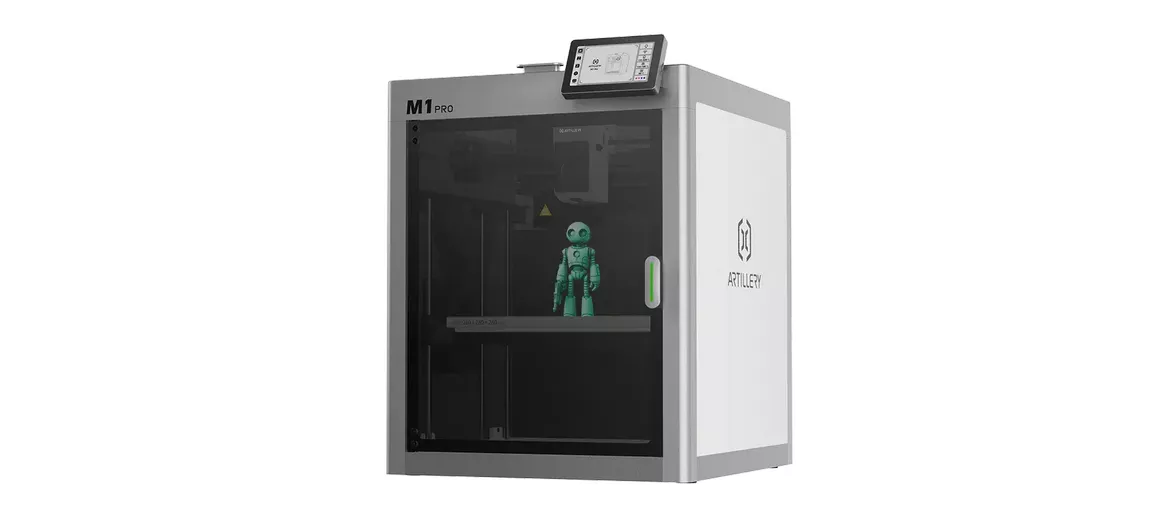
Material Compatibility
4.0 /5
Artillery machines are typically designed with versatility in mind. Their direct drive systems, paired with heated beds (which prevent prints from warping by maintaining a warm surface) and all-metal hotends (hotends made entirely of metal components, capable of sustaining higher temperatures), allow easy printing of standard materials like PLA (a biodegradable, easy-to-print plastic), PETG (more durable and temperature-resistant), and TPU (a flexible, rubber-like filament). ABS (a strong plastic that requires good temperature control) is printable on enclosed or semi-enclosed models, though the lack of full enclosures in some units limits performance with more advanced filaments like nylon or PC (polycarbonate, a high-temperature, impact-resistant plastic). Nevertheless, Artillery’s openness to third-party filaments, combined with good thermal management, makes their printers practical for a wide range of everyday applications.
Build Volume & Variety
4.1 /5
One of Artillery’s standout strengths is its generous build volumes. The Sidewinder series, for instance, offers large print areas up to 300 x 300 x 400 mm (providing ample room for large props, functional parts, or batch printing), appealing to users who need more space without moving to industrial-sized machines. Even the smaller Genius series maintains respectable mid-range build sizes suitable for desktop use. While Artillery doesn’t venture much into compact, mini-style printers, its focus on mid-to-large volume machines makes it attractive for users working on larger prototypes, cosplay props, or multi-part assemblies.
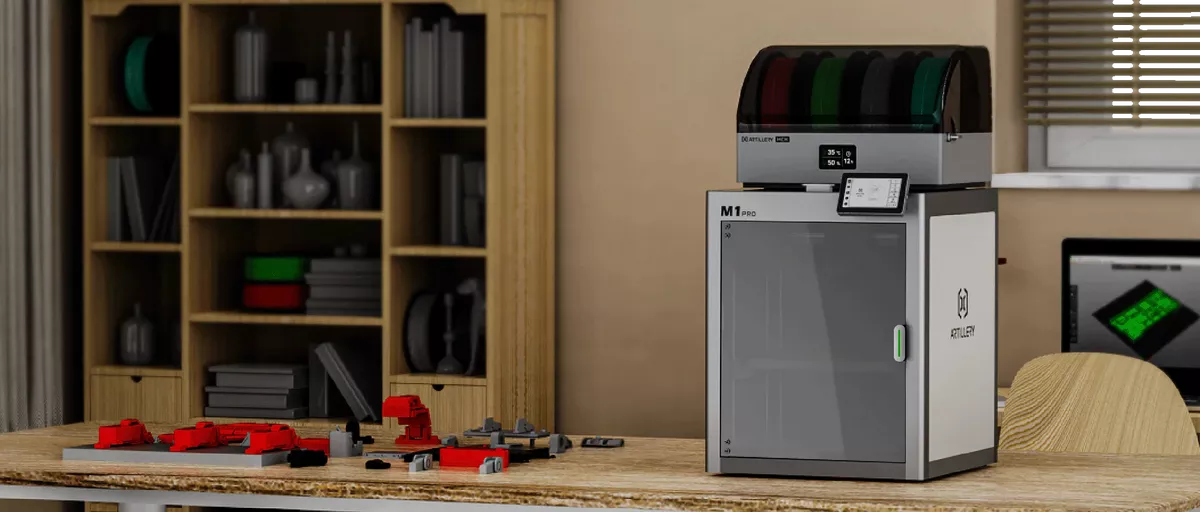
Reliability & Durability
3.7 /5
Artillery’s hardware is generally robust, particularly in terms of frame construction and motion components like linear rails and belts. However, some earlier models like the Sidewinder X1 were criticized for minor reliability issues, such as weak ribbon cables (flat, flexible cables that connect printer components and are prone to wear over time) and inconsistent quality control on extruder assemblies. The brand has steadily addressed these concerns in newer models like the X4 series, improving cable management and overall build integrity. While mechanical durability is strong, users should still be mindful of regular maintenance to ensure long-term performance, especially on moving parts like belts and extruder gears.
Maintenance
3.9 /5
Maintenance requirements for Artillery printers are moderate. Access to parts like the hotend, belts, and mainboard is straightforward, which simplifies repairs and upgrades. The community provides extensive resources, including printable upgrades and open firmware modifications (such as Marlin or Klipper firmware adjustments). Nevertheless, issues like ribbon cable wear—especially on older Sidewinder models—mean some parts may require proactive replacement or reinforcement. Newer designs have reduced these pain points significantly, making ongoing maintenance easier for most users.
Technology & Features
3.8 /5
Artillery integrates impressive features for its price point. Direct drive extruders, silent stepper drivers, touchscreen interfaces, filament runout sensors (which pause the printer when filament runs out), and automatic bed leveling are standard or easily added on most units. The newer X4 series even includes Klipper integration, unlocking faster speeds and smarter control options. However, Artillery generally prioritizes practicality over flashy innovations, meaning features are robust and functional rather than experimental. This makes their printers reliable workhorses for users who prefer stable, predictable performance over cutting-edge complexity.
Conclusion
Artillery delivers strong, feature-rich 3D printers that focus on large build volumes, ease of use, and competitive pricing. While some earlier models faced quality control challenges, the brand’s newer offerings show clear improvements in reliability and user experience. For hobbyists and semi-professionals seeking quiet operation, direct drive systems, and large print capacities without overspending, Artillery remains a compelling choice—especially for those willing to perform occasional upgrades and maintenance for peak performance.

